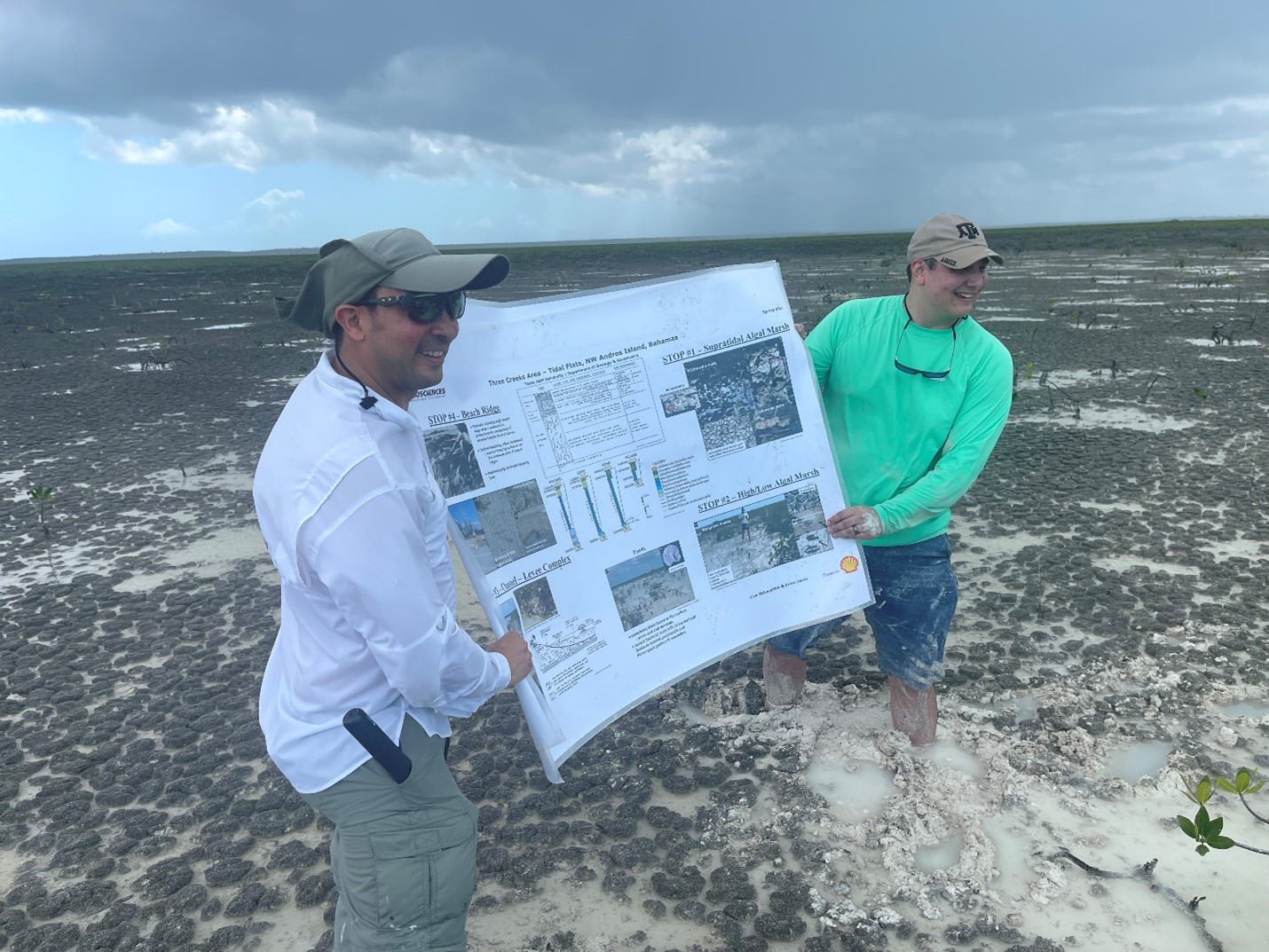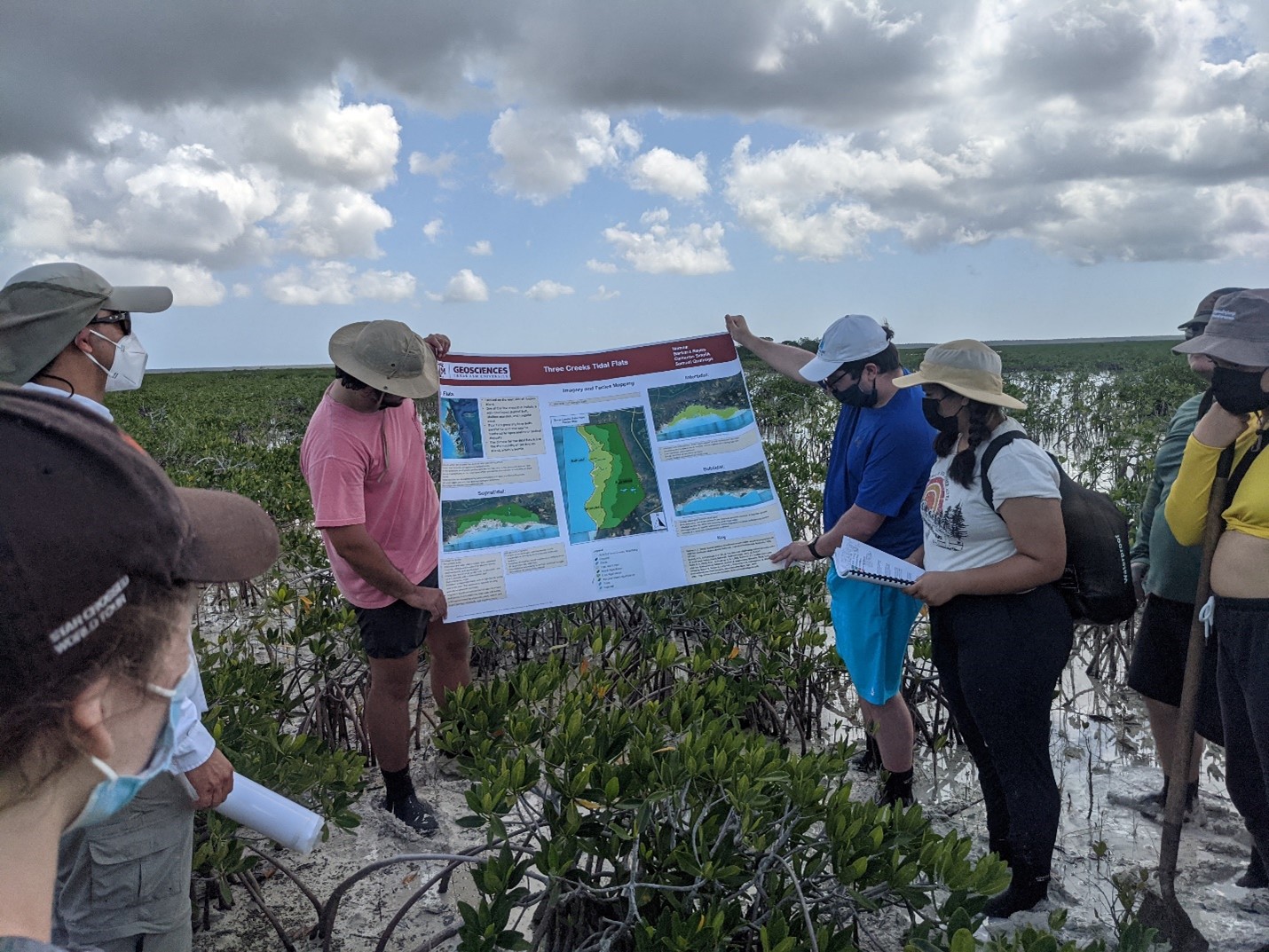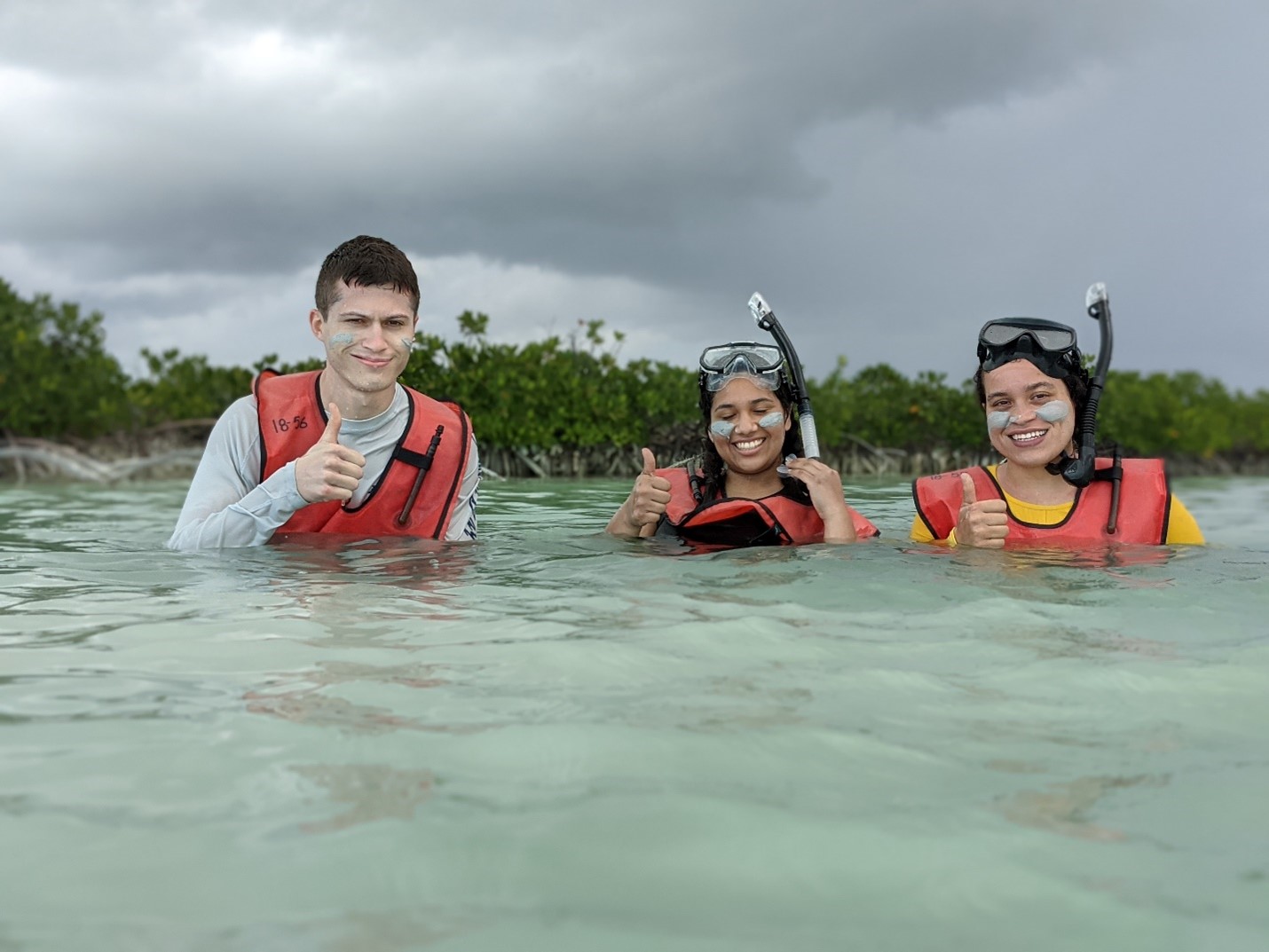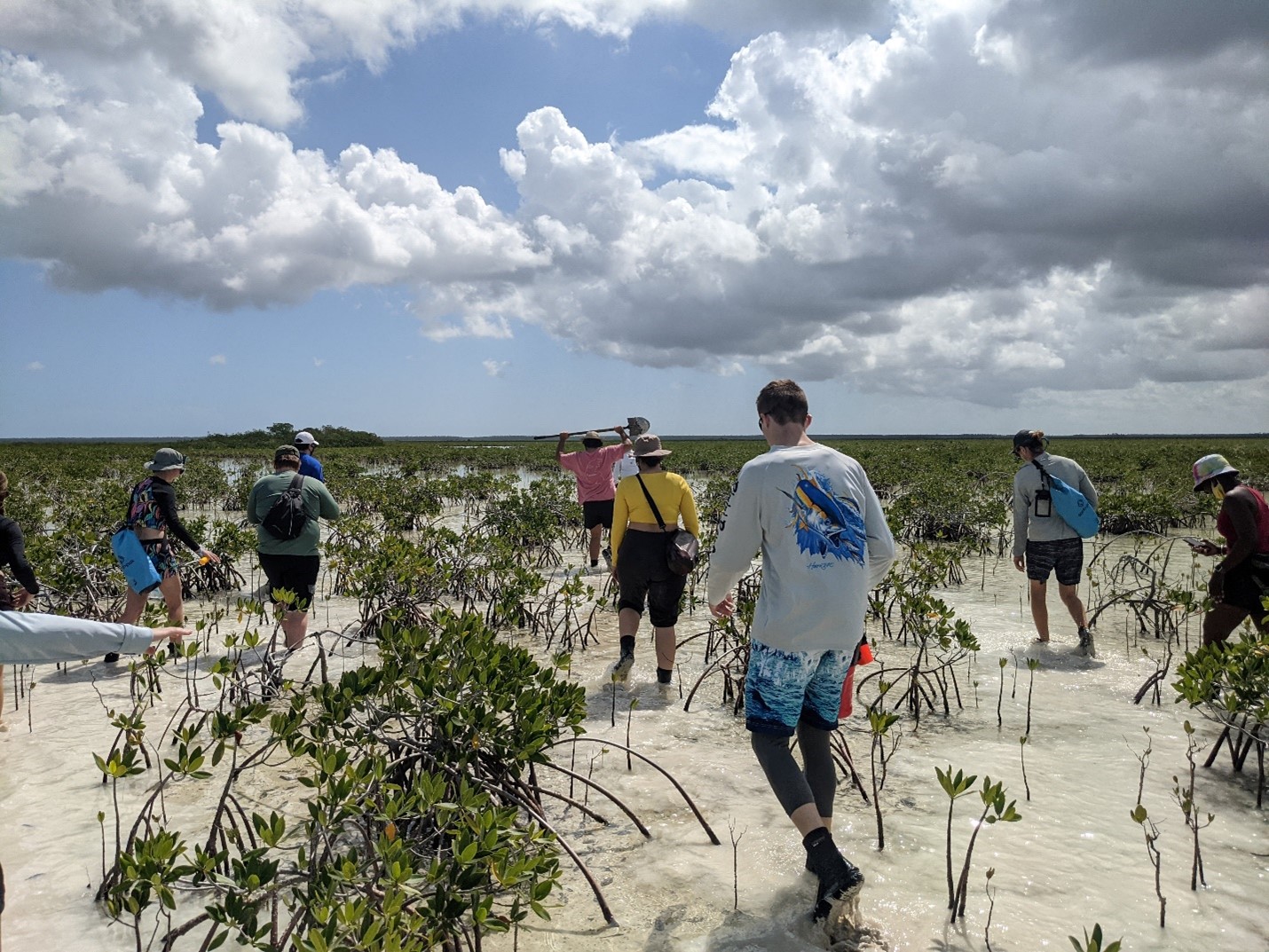Geology And Geophysics Students Experience Carbonates Up Close On Field Study Trip To The Bahamas
Dr. Juan Carlos Laya and undergraduate students spent an extended spring break in The Bahamas to investigate a modern carbonate platform
Apr 11, 2022

Dr. Juan Carlos Laya and Dr. Cameron Manche discuss carbonate mud deposition in the inland supratidal algal marsh on the leeward side of Andros Island. Photo by Dennis Zakowicz.

Any aspiring soft rock geologist will appreciate a well-preserved carbonate outcrop and how it relates to interpreting past environments, but it is an entirely new level of understanding when you get to see these sediments in action. That is exactly the opportunity Department of Geology and Geophysics professor Dr. Juan Carlos Laya, and Berg-Hughes Center post-doctoral research associate Dr. Cameron Joseph Manche, provided for the students enrolled in the Geology 330 Field Studies class, with their spring break trip to the largest of the Bahaman islands, Andros Island.
“Being one of the least inhabited islands in The Bahamas makes it an excellent natural laboratory to study modern carbonates and their depositional processes,” Laya said.
To teach the students how to use Andros Island as a modern analog for the formation and evolution of ancient carbonate platforms, Laya and Manche led the students through 3 field days of tidal channels, tidal flats, tidal marshes, ooid dominated shoals, patch reefs, freshwater and saltwater blue holes, and Pleistocene karst outcrops.
“This trip is a transformative experience for any up-and-coming geologist, as it allows student to witness firsthand what they have spent the last few years learning in the classroom,” Laya said.
"It was very exciting to make the outdoors our classroom. Being able to truly visualize carbonate systems in a 3D space definitely helped piece everything together." says Barbara Reyes, undergraduate class of '22, a participant in the field study class.
"In addition to hiking through an intertidal zone, having passionate professors made this a trip that I don't think any of us could ever forget," Reyes said.
By John Sarao


Students describe a Pleistocene outcrop of the paleo-shoreline from 115,000 to 120,000 years ago. Students from left to right: Milly Hencey, Cameron Smolik, Sam Queiroga, Abbie Nye (Forfar Field Station Environmental Educator), Kari Dawson (Forfar Field Station Environmental Educator), and Dennis Zakowicz.


